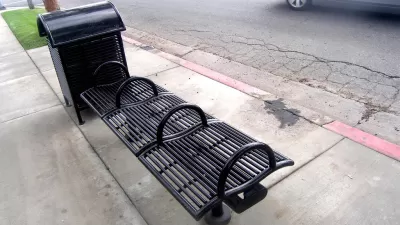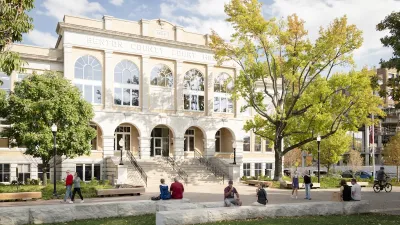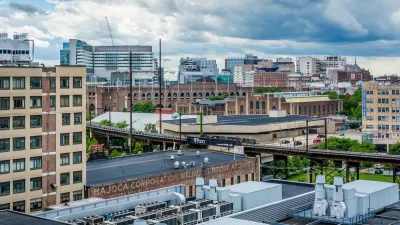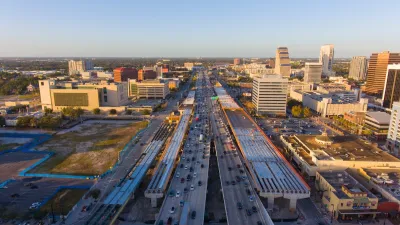Seating in the public realm often isn’t designed to accommodate varied body types, ages, and abilities.

In an op-ed in Next City, Alanah Nichole Davis calls on cities to consider how street furniture and public seating accommodate — or don’t — people of various body types.
For those at the intersection of factors like weight, pregnancy, age and disability, the challenge of finding suitable public seating can disrupt a sense of belonging and inhibit our ability to thrive. Something as simple as taking a walk in a park or meeting a friend for lunch may become a daunting task due to design shortcomings in open spaces.
Davis cites programs in cities like Boston and New York aimed at making public seating more accessible. Boston’s age-friendly bench initiative installs benches that make sitting and standing easier for elderly people near key destinations.
Davis poses the argument another way: “Hostile architecture and defensive design are known for discouraging humans who might be unhoused from staying in an area for too long. But if an armrest, chair width or other seating features discourage varied body types — whether housed or unhoused residents or visitors — from sitting comfortably in our cities, isn’t that hostile, too?”
FULL STORY: Urban Seating Isn’t Designed for My Body. It’s Time To Change That.

Alabama: Trump Terminates Settlements for Black Communities Harmed By Raw Sewage
Trump deemed the landmark civil rights agreement “illegal DEI and environmental justice policy.”

Study: Maui’s Plan to Convert Vacation Rentals to Long-Term Housing Could Cause Nearly $1 Billion Economic Loss
The plan would reduce visitor accommodation by 25% resulting in 1,900 jobs lost.

Why Should We Subsidize Public Transportation?
Many public transit agencies face financial stress due to rising costs, declining fare revenue, and declining subsidies. Transit advocates must provide a strong business case for increasing public transit funding.

Wind Energy on the Rise Despite Federal Policy Reversal
The Trump administration is revoking federal support for renewable energy, but demand for new projects continues unabated.

Passengers Flock to Caltrain After Electrification
The new electric trains are running faster and more reliably, leading to strong ridership growth on the Bay Area rail system.

Texas Churches Rally Behind ‘Yes in God’s Back Yard’ Legislation
Religious leaders want the state to reduce zoning regulations to streamline leasing church-owned land to housing developers.
Urban Design for Planners 1: Software Tools
This six-course series explores essential urban design concepts using open source software and equips planners with the tools they need to participate fully in the urban design process.
Planning for Universal Design
Learn the tools for implementing Universal Design in planning regulations.
Caltrans
Smith Gee Studio
Institute for Housing and Urban Development Studies (IHS)
City of Grandview
Harvard GSD Executive Education
Toledo-Lucas County Plan Commissions
Salt Lake City
NYU Wagner Graduate School of Public Service





























